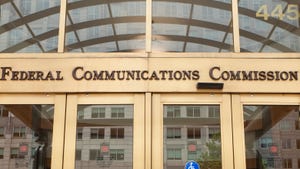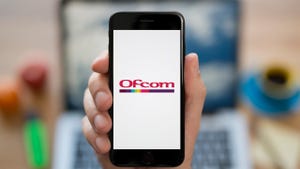US Cellular is rolling out 5G standalone but may struggle to stand aloneUS Cellular is rolling out 5G standalone but may struggle to stand alone
American MNO US Cellular will roll out 5G standalone technology over the coming year, having selected vendor partner Nokia to provide the equipment and related services.
September 10, 2021

American MNO US Cellular will roll out 5G standalone technology over the coming year, having selected vendor partner Nokia to provide the equipment and related services.
But while the US’s (distant) fourth mobile network operator is pushing on with the deployment of its 5G core, questions remain over its future as a standalone company.
Nokia this week revealed that it will extend its existing relationship with US Cellular to roll out the telco’s standalone 5G core by the end of 2022, providing hardware, software and services. The Finnish vendor has already provided 5G RAN equipment, supplying radios for low-band and mmWave 5G services.
Under the terms of the deal, US Cellular will also be able to avail itself of Nokia’s cloud-native, open modular structure “to rapidly introduce and scale future network functions for new revenue opportunities,” Nokia said.
US Cellular is going to need those revenue opportunities if it is to build on its position in the US mobile market.
With a customer base of just 5 million, the telco is dwarfed by the big three – AT&T, Verizon and T-Mobile US – and although it is performing fairly solidly, it is not showing any signs of rapid growth. Last month US Cellular posted second-quarter figures that showed 4% revenue growth to $1.01 billion, buoyed by increasing postpaid ARPUs, but adjusted EBITDA slipped by 5% to $267 million.
At its Q2 results presentation US Cellular highlighted growth as a strategic priority, noting that it aims to take a regional approach to drive the expansion of its market share. But to date its market share is not expanding. The first two quarters of 2021 both brought negative net customers additions, both in handsets and connected devices.
In a market in which scale counts for a lot, there is little wonder that US Cellular is being named as a buyout target.
Earlier this year analysts floated the possibility that Dish Network could be interested in acquiring US Cellular’s parent company TDS, and while there appears to be little substance to the suggestion, it certainly makes a lot of sense.
US Cellular is America’s fourth mobile operator by default, T-Mobile’s acquisition of Sprint having propelled it into that position. With Dish now making a serious mobile push – it plans to launch its 5G network this year – it will likely take the fourth place crown pretty soon; it already has more customers than US Cellular, but not on its own network.
Whether a Dish/US Cellular deal is actually on the cards is anyone’s guess. Dish has not shied away from acquisitions thus far, but US Cellular could be a step too far. Meanwhile US Cellular is very much a regional player and might well be content to stay that way.
As an aside, US Cellular has talked about building value at its towers business. It owns 4,278 of them, bringing in around $20 million per quarter from third-party rentals, but that figure is set to rise next year once a leasing deal with Dish Network – who else? – kicks in. There’s not a lot we can infer from the deal with Dish, inked in Q2; Dish is hardly going to start building its own towers to roll out that 5G network. But given the flurry of telco tower M&A over the past few years, there could be some action on that front at some point.
That’s another story though. For now, this is about US Cellular working with Nokia to further its 5G rollout.
But given the cost of 5G rollout – consider that US Cellular spent $1.46 billion on C-band spectrum covering 94% of its operating footprint earlier this year; that’s a fair chunk of cash for a subs base of sub-5 million, and C-band is only a part of the 5G story – it is unsurprising that M&A rumours persist.
Get the latest news straight to your inbox. Register for the newsletter now
About the Author
You May Also Like










.png?width=300&auto=webp&quality=80&disable=upscale)


_1.jpg?width=300&auto=webp&quality=80&disable=upscale)